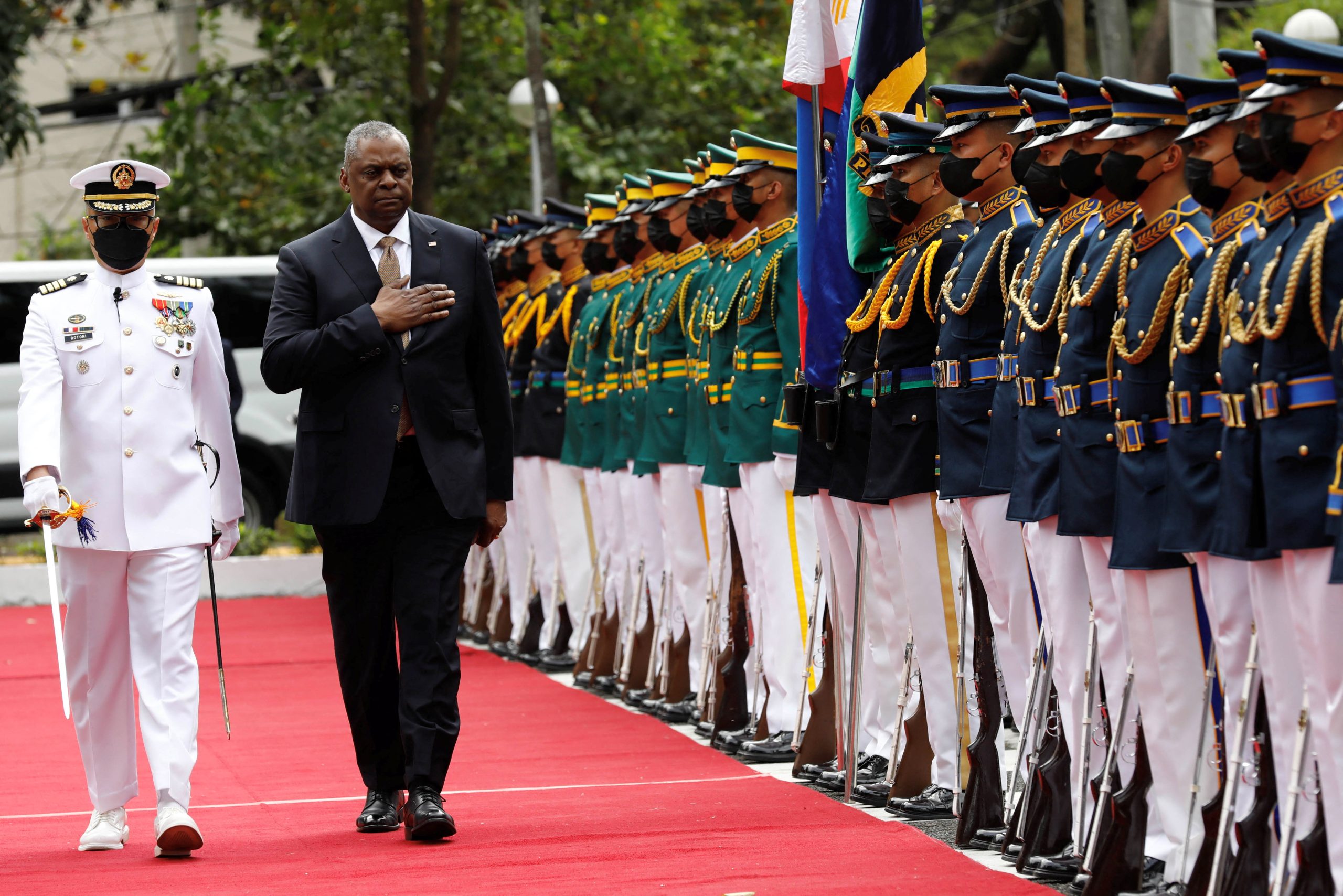
[elfsight_social_share_buttons id=”1″]
The Philippines has granted the United States greater access to its military bases, their defense chiefs said on Thursday, amid mounting concern over China’s increasing assertiveness in the disputed South China Sea and tension over self-ruled Taiwan.
The United States would be given access to four more locations under the 2014 Enhanced Defense Cooperation Agreement (EDCA), U.S. Defense Secretary Lloyd Austin and Philippines‘ Defense Secretary Carlito Galvez said in a joint news conference at the Philippine military headquarters in Manila.
Austin, in the Philippines for talks as the United States seeks to extend its security options as part of efforts to deter any move by China against self-ruled Taiwan, referred to the Philippine decision as a “big deal” as he and his counterpart reaffirmed their commitment to bolstering their alliance.
“Our alliance makes both of our democracies more secure and helps uphold a free and open Indo-Pacific,” said Austin, whose visit follows one by U.S. Vice President Kamala Harris in November, which included a stop at Palawan island in the South China Sea.
“We discussed concrete actions to address destabilizing activities in the waters surrounding the Philippines, including the West Philippine Sea, and we remain committed to strengthening our mutual capacities to resist armed attack,” Austin said.
“That’s just part of our efforts to modernize our alliance. And these efforts are especially important as People’s Republic of China continues to advance its illegitimate claims in the West Philippine Sea,” he added.
China said greater U.S. access to Philippine military bases undermined regional stability and raised tensions.
“This is an act that escalates tensions in the region and endangers regional peace and stability,” China’s foreign ministry spokesperson Mao Ning said in a regular briefing.
“Regional countries should remain vigilant about this and avoid being used by the U.S.”
The additional sites under the EDCA bring to nine the number of military bases the United States would have access to. The United States has announced it was allocating more than $82 million for infrastructure at the existing sites.
The EDCA allows U.S. access to Philippine military bases for joint training, pre-positioning of equipment, and the building of facilities such as runways, fuel storage, and military housing, but not for a permanent presence.
Austin and Galvez did not specify the sites that would be opened to U.S. access. The former Philippine military chief had said the United States had asked for access to bases on the main northern island of Luzon, the closest part of the Philippines to Taiwan, and on Palawan in the southwest, near the disputed Spratly Islands in the South China Sea.
Outside the military headquarters, dozens of protesters opposed to a U.S. military presence chanted anti-U.S. slogans, and called for the EDCA to be scrapped.
Before meeting his counterpart, Austin met Philippine President Ferdinand Marcos and assured him of U.S. support.
“We stand ready to help you in any way we can,” Austin said.
Ties between the United States and its former colony were soured under the previous president, Rodrigo Duterte, who made overtures towards China and was known for anti-U.S. rhetoric and threats to downgrade military ties.
Marcos has met President Joe Biden twice since the son of the former dictator, also called Ferdinand Marcos, won a landslide victory in an election last year and reiterated he could not see a future for his country without its longtime treaty ally.
“I have always said, it seems to me, the future of the Philippines and for that matter the Asia-Pacific will always have to involve the United States,” Marcos told Austin.
Copyright 2023 Thomson/Reuters
